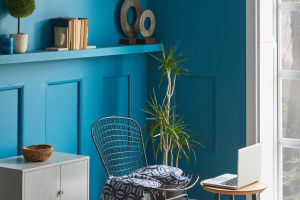Hello Lykkers! As the seasons change, indoor air can become dry, causing discomfort and health concerns.
Thankfully, a humidifier can provide relief by maintaining the right level of moisture in your home.
Using a humidifier the right way ensures a healthier and more comfortable living environment. Let’s explore into the best practices for getting the most out of your humidifier.
1. Choose the Right Type of Humidifier
Not all humidifiers are created equal. They come in different types, including cool mist, warm mist, and ultrasonic models. Cool mist humidifiers are ideal for adding moisture without raising the room's temperature, making them perfect for warmer seasons or areas with high heat.
On the other hand, warm mist humidifiers can help alleviate cold symptoms by adding warmth to the air, which can be especially useful in winter. Ultrasonic humidifiers are quiet and energy-efficient, making them ideal for bedrooms or smaller spaces.
2. Maintain Proper Humidity Levels
One of the most common mistakes people make is running their humidifier at full power without monitoring humidity levels. The ideal indoor humidity should range from 40% to 60%. Too much humidity can lead to mold growth, dust mites, and respiratory issues.
To prevent this, use a hygrometer to measure humidity levels and ensure they remain within a comfortable range. Many modern humidifiers come with built-in humidistats, allowing them to automatically adjust their output to maintain the desired humidity level.
3. Position the Humidifier Correctly
Where you place your humidifier matters. For optimal performance, position the humidifier in the center of the room or near the air intake of your heating or air conditioning system. This ensures the moisture is evenly distributed. Avoid placing it directly on the floor or near walls, as the water vapor may condense and cause dampness in those areas. A raised surface, such as a table or shelf, will help the moisture disperse more evenly.
4. Regular Cleaning Is Essential
Humidifiers are prone to mold and bacteria growth, especially when not cleaned properly. To prevent the buildup of harmful microorganisms, it’s crucial to clean your humidifier regularly—at least once a week, or more often if you're using it daily. Follow the manufacturer's guidelines for cleaning, and always use distilled water to avoid mineral buildup. If your humidifier uses filters, replace them regularly to ensure efficient functioning and cleaner air.
5. Use Essential Oils Wisely
Some humidifiers allow you to add essential oils, but this feature should be used with caution. While essential oils can create a pleasant aroma, they can also damage certain humidifier components or reduce their lifespan. Always check the manufacturer’s instructions before using essential oils in your humidifier. If your model isn’t designed for this purpose, consider using a separate diffuser to avoid any potential issues.
6. Monitor the Air Quality
Humidity is just one element of air quality. It’s important to combine the use of a humidifier with proper ventilation. Ensure the space has adequate airflow, especially when using a humidifier for extended periods. A room that’s sealed too tightly can result in the buildup of indoor air pollutants. Open windows when possible, or use an air purifier to complement your humidifier’s function.
7. Watch for Signs of Overuse
Sometimes, too much of a good thing can have negative effects. If you notice condensation on windows, musty smells, or a damp feeling in the air, it may be time to adjust your humidifier settings. These signs indicate that the humidity level is too high and could lead to mold growth or respiratory discomfort.
By following these tips, your humidifier can work wonders in making your home more comfortable and healthy. With the right practices, indoor air can feel fresher and more soothing, promoting better sleep and overall well-being. Keep these pointers in mind, and enjoy the benefits of a well-moisturized space. Stay cozy, Lykkers!
Safe and Sound: Mastering Humidifier Types and Best Practices for a Healthy Home!
Video by Medical Centric


